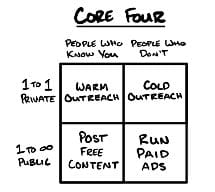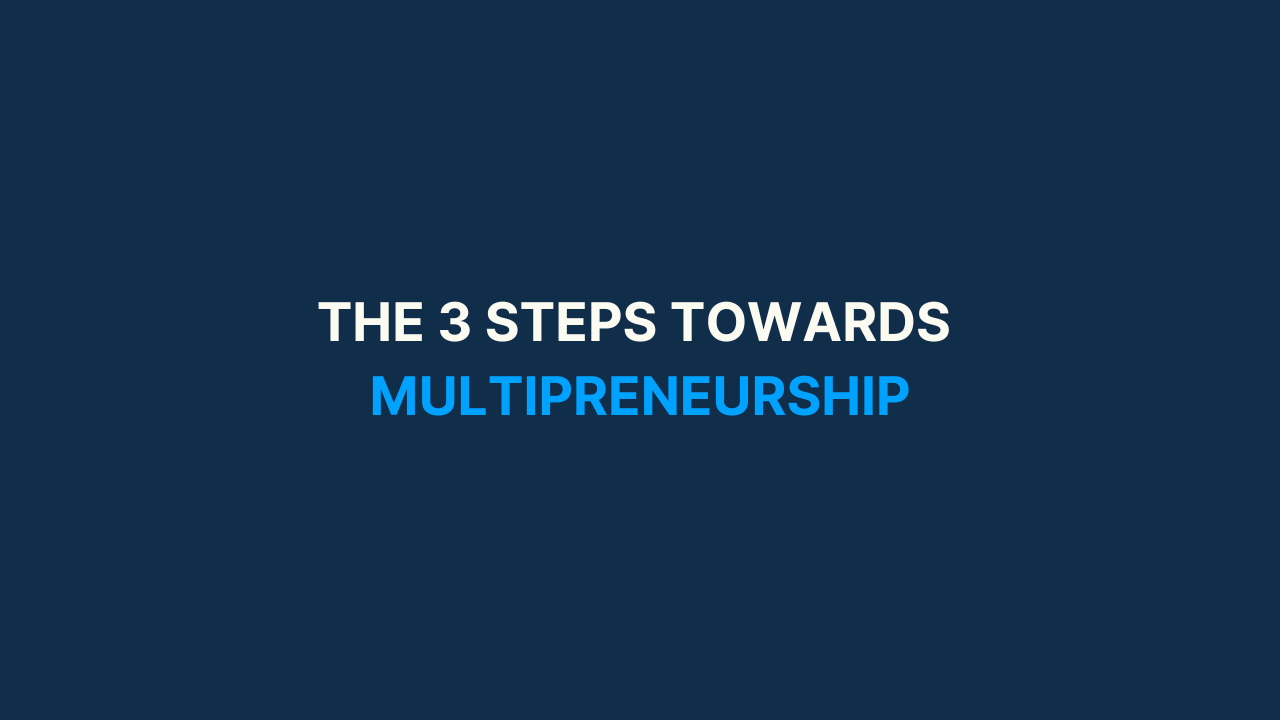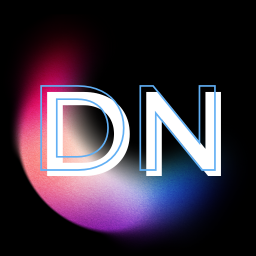How to build your Portfolio Career [#49]
The Portfolio Career, Chapter 2: a 4-step process to building one.
![How to build your Portfolio Career [#49]](/content/images/size/w1460/2024/11/How-to-become-a-generalist--10-.png)
This is the second part of an (at least) 4-part email series, published over the next weeks about the topic of the Portfolio Career.
- Chapter 1: What is a Portfolio Career?
- Chapter 2: How do you build a Portfolio Career? (you are here)
- Chapter 3: The Three Steps towards Multipreneurship
- Chapter 4: How I’m building my Portfolio Career
- Chapter 5: How to treat your identity like your portfolio
Here’s a mindset shift for you:
From today onwards, your career isn’t “you” anymore. Your career is a startup, and you are its CEO.
A valuable reflection question here is: if I hired a professional CEO for my life, what would his 30-60-90 plan be? (A 30-60-90 plan is what executives use in a new job to build traction quickly, by establishing what they want to achieve within 30, 60, and 90 days).
Easiest promotion ever. 😄
So now that you’re the CEO, how do you build a startup?
You need:
- Product: something you can sell
- Marketing: a unique way of selling it
- Operations: delivering the thing that you sell
- Finance: ensuring the thing that you sell makes you money
Let’s take a look at each of those.
[1] Product
First, think through the things that you can sell - either in form of a product or, more likely, a service.
What you’re selling is a combination of effort and knowledge: the more knowledge you have, the less effort you have to sell.
If you’re early on in your career, you’re likely selling hard work. Later on in your career, you might be selling your knowledge instead to save others from hard work.
This is why career progression tends to inform the Archetype of Portfolio Career that we build: early on, you might be a Side Hustler, a Serial Specialist or maybe a Multipreneur; the later stage you are in your career, the more likely it becomes that you’ll turn into a Freelance Specialist or a Fractional Executive.
So to identify your “product”, first identify who you are by asking the following five questions (h/t to Anna MacKenzie):
- What are my strengths?
- What do people say I’m good at?
- What do people consistently seek my help with?
- What do I feel energised by?
- What do I value?
Remember, building a Portfolio Career isn’t just about building job security; it’s about a building a career that you consistently will enjoy doing. It’s easier to be energized by what you do if it’s aligned with who you are.
This process is how I arrived at the idea to build an online course about Personal Productivity.
I would’ve never thought about creating this myself because I simply assumed that everybody else also does this and manages their time well. I was quite surprised when my peers told me that I’m exceptionally good at this.
Next, ask what you know. You won’t make money with your personality, but your effort and knowledge. And since effort is a finite resource, let’s look at your knowledge:
- What skills do I have that could be valuable to others?
- What industry experience do I have that could be valuable to others?
- What results have I created for my past clients, customers or employers?
- What skills can I shop around right away?
Based on these insights, you can now begin to iterate on your products and services that you want to provide. It doesn’t necessarily have to be just one – after all, we’re building a Portfolio Career here.
And if you have a full-time job, remember: a full-time job is also just a service that your employer is paying a monthly subscription fee for.
Once you have a basic understanding of what your product could look like, it’s time to talk to customers. As in startup building, the best products aren’t built in an isolated room, but together with the people who buy it.
I also recommend checking out Vassilena’s post about “reading the label from inside the jar”.
[2] Marketing
How do I get leads? You already have them.
- If you have contacts in your phone, you have leads.
- If you have connections on LinkedIn, you have leads.
- If you have email addresses of people, you have leads.

This is the “Core Four” of customer acquisition, popularized by Alex Hormozi in $100M Leads.
Start by identifying who you know already, and ask them what kind of problems they’re facing. Sooner or later, you will unearth a problem that you can solve.
If you’ve already worked in an industry, you likely know what problem to solve already (eg. if you’re a seasoned PPC Marketing Manager, you can skip this step because you know the problems you can solve).
Then, reach out to more people you know to offer your service. They might not buy your product/service themselves, but they could point you towards someone who might.
Hormozi suggests to do 100 outreaches a day until you’ve reached out to everyone you know. I personally think that 20 outreaches per day are more reasonable, as you still have other stuff to do – unless you're building your portfolio career full-time.
Once you’ve done your warm outreach, you might already have a first customer. But since we’re in this for the long term, brand building becomes important - so create content around your service to build brand awareness.
(Believe it or not, that’s what I’m doing in this newsletter right now - the service I'm building just isn’t public yet. Come back again tomorrow 😉).
When you have figured out the content game, cold outreach and eventually paid ads follow. But I believe that to get started, the first two quadrants are already sufficient.
With lead generation in place, you now have to deliver the service.
[3] Operations
Regardless of your archetype, embarking on a Portfolio Career will require you to get a handle on your time and energy. You’re doing things differently now.
Start by planning out your years, quarters, weeks, and days meticulously - so you know what you’ll be working on at any given point. (In chapter 4, I’ll show you how I do it.)
Once you know what you’re working on, learn how to work on it more intensely – by increasing your focus, and identifying the things that truly move the needle.
Then, you’ll need to work on the right things with intense focus consistently. The best things aren’t created in a day or two, but with extended periods of hard work.
Finally, it’s easy to burn out when doing many things at the same time - so you need to maintain and manage your energy by ensuring you’re getting enough rest, free time, and social interactions.
These are the four pillars of Personal Productivity, and a Portfolio Career is a perfect use case for them.
If you want to go deeper here, you might want to take my new online course, Personal Productivity OS, where I give you actionable system for these four pillars that you can implement right away. Takes less than three hours. 30-day money back guarantee.
(Advertisement over. ;))
Operations will only scale if you build proper systems. To build those, you need tools. These are the most important ones:
- Communications: get your email set up properly. There are a myriad ways to do this, but you need to centralize your communications somewhere.
- Task Management: without a proper task management system, it’s almost impossible to run a Portfolio Career, as you have to keep track of several ventures at the same time.
- Knowledge Management: you also need to document all the things you do somewhere, store your files and data, and build out a database.
- Calendar: of course, you need to keep track of your appointments - so set this up properly. Bonus points for using a booking tool like Calendly.
In the next two newsletters, I’ll break down en detail how I run my own operations – including the tool stack that I use.
Now that you’re delivering your service/product, you just need to make money.
[4] Finance
The point of a Portfolio Career is, after all, to diversify your income streams. But they need to come together somewhere.
Instead of treating your different activities and accounting for them individually, I’d recommend unifying them in a single source of truth.
Most people have no idea how much money they make or spend in a given month with just one stream of income; with several, it just becomes more confusing.
It’s probably best to create one income stream, then another one, and so on. Things become stressful very quickly when you run out of funds.
So instead of quitting your full-time job without having any other stream of income lined up, try building up alternate income before you quit.
Fundamentally, you run your own life like you’d run a company’s finance department: with budgets, revenue & cost planning, and monthly accounting. Sounds boring as fuck, but … what gets measured, gets managed. And you can’t afford not to manage your finances.
Question for you:
If you wanted to start building a Portfolio Career today, what’s the biggest obstacle that you face?
That’s it for today. This was more theoretical; the next two will much more practical, as I’ll share how I’m currently going about building my Portfolio Career. Stay tuned (and if for some reason, you’re not subscribed yet, do this ASAP).
Much love
Dominik
PS: One of the best ways to build a Portfolio Career is to learn how to run a startup. The best way to learn how to run a startup is to become a Founder’s Associate. If you’re curious about taking on such a role in Germany or the EU (or know someone who does), consider applying to Generalyst.
Read this next:

Dominik Nitsch Newsletter
Join the newsletter to receive the latest updates in your inbox.
